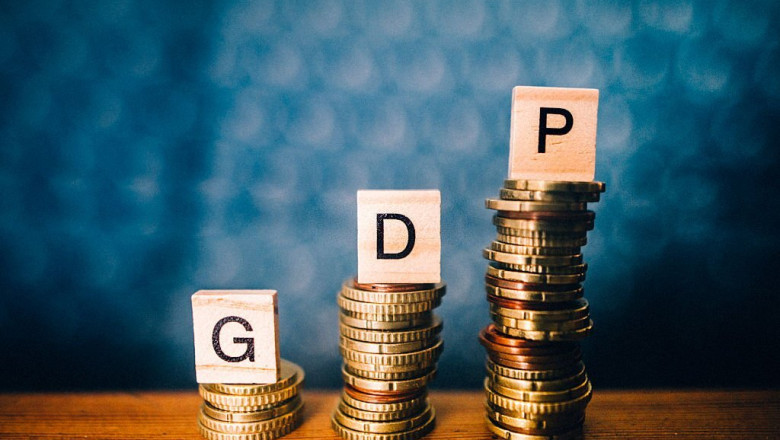
Great choice, Jhon!
Here is your blog content package for the topic:
✅ Topic: Indonesia GDP
📍 Introduction
Indonesia, the largest economy in Southeast Asia, continues to solidify its position as a regional powerhouse. As of 2025, its Gross Domestic Product (GDP) reflects not only the nation’s growing output but also a story of resilience, strategic transformation, and an increasingly digitalized economy.
In this article, we’ll dive deep into Indonesia's GDP — how it’s measured, what’s driving it, the sectors leading the charge, the global context, and what this means for Indonesians and international observers alike.
🌍 1. What is GDP and Why It Matters?
GDP measures the total monetary value of all goods and services produced in a country within a specific time frame. It’s a key indicator of economic health, guiding decisions for:
-
Government policies
-
Foreign investments
-
Global rankings
-
Development planning
🇮🇩 2. Indonesia’s Current GDP Snapshot (2025)
As of early 2025:
-
Nominal GDP: ~$1.6 trillion USD
-
GDP Growth Rate: ~5.1% YoY (Year over Year)
-
GDP per Capita: ~$5,700 USD
-
Global Rank: 16th largest economy
-
ASEAN Rank: 1st
These figures position Indonesia ahead of countries like Thailand and Malaysia, and closer than ever to joining the ranks of developed economies.
🔧 3. Key Drivers of Indonesia’s GDP Growth
Let’s break down the major contributors:
a. Manufacturing and Industry
Indonesia’s industrial sector contributes over 20% of its GDP. Key areas include:
-
Automotive (e.g., Toyota, Hyundai factories)
-
Electronics
-
Textiles
-
Palm oil processing
b. Services Sector
The largest sector by contribution, exceeding 40% of GDP. Includes:
-
Banking & Finance
-
E-commerce (e.g., Tokopedia, Shopee)
-
Tourism (e.g., Bali, Labuan Bajo)
c. Agriculture
Still a core of rural livelihoods and ~13% of GDP:
-
Palm oil
-
Rice
-
Cocoa
-
Coffee
d. Digital Economy
By 2025, digital economy is estimated at $130 billion, thanks to:
-
Internet penetration (76%+)
-
Startups (e.g., Gojek, Ruangguru)
-
Fintech growth
📈 4. Historical GDP Growth Trajectory (2010–2025)
| Year | Growth Rate (%) | Notes |
|---|---|---|
| 2010 | 6.2% | Post-crisis recovery boom |
| 2015 | 4.9% | Commodity price slump |
| 2020 | -2.1% | COVID-19 pandemic impact |
| 2021–2022 | 5.3% avg | Strong rebound |
| 2023 | 5.1% | Stabilized growth |
| 2025 (est) | 5.1–5.4% | Digital + domestic investment boost |
🌐 5. Global Context: How Indonesia Compares
Indonesia is the largest Muslim-majority economy, and among G20 members with fastest growth. Compared to neighbors:
-
Indonesia: $1.6T GDP
-
Thailand: ~$600B
-
Malaysia: ~$430B
-
Philippines: ~$500B
-
Vietnam: ~$460B
It has also attracted interest from major investors from China, Japan, and the US.
🔍 6. Indonesia’s GDP by Province
Economic output is concentrated in:
-
Java Island: 58% of GDP
-
Jakarta: Financial and business center
-
West Java, East Java: Manufacturing hubs
-
Sumatra: Palm oil and coal-rich
-
Kalimantan & Papua: Resource extraction
🏗️ 7. Infrastructure and Capital Relocation: Ibu Kota Nusantara (IKN)
Indonesia’s bold decision to move its capital from Jakarta to Nusantara (IKN) in East Kalimantan will reshape its GDP geography:
-
~$32 billion investment
-
Aims to decentralize growth
-
Smart, green city concept
-
Expected to add 0.2–0.3% to GDP annually from 2025–2035
🧠 8. Challenges to GDP Growth
While the numbers look promising, there are hurdles:
-
Infrastructure gaps in rural areas
-
Corruption and bureaucracy
-
Climate change impact on agriculture
-
Unemployment & underemployment
-
Debt management (public debt ~39% of GDP)
🌱 9. The Role of Sustainability in Economic Growth
Indonesia is embracing ESG (Environmental, Social, and Governance) policies:
-
23% energy from renewables by 2025 goal
-
Reforestation and peatland protection
-
Green financing and carbon trading pilot
This creates new growth areas and global partnerships, especially with EU, Japan, and UN.
📊 10. GDP vs. Real Quality of Life in Indonesia
GDP growth is important, but does it translate into better living?
-
Poverty Rate: 9.3% (2025)
-
Middle Class Expansion: Over 140 million people
-
Access to Education & Healthcare: Improving, but gaps remain
-
Urbanization Rate: 57%, driving consumption
So yes, GDP growth is improving quality of life, albeit unevenly across regions.
🏦 11. What Investors and Economists Say
Top analysts agree:
-
Indonesia is a “sleeping giant” with a demographic bonus
-
Political stability under President Prabowo (2024–2029 term) offers confidence
-
Sectors like EV batteries, tourism, and Islamic finance are key growth targets
🚀 12. The Future: Can Indonesia Become a Top 10 Economy by 2030?
Projections say yes, if:
-
Productivity improves
-
Education reform continues
-
SMEs are empowered
-
Digital & green investments stay strong
Indonesia has the scale, youth, and resources — the next 5 years are critical.
🧾 Conclusion
Indonesia’s GDP is not just a number — it’s a dynamic reflection of the country’s ambition, transformation, and resilience. In 2025, it stands tall as a regional leader, with a future tied closely to technology, sustainability, and smart governance.
For global investors, observers, and Indonesians alike, Indonesia’s GDP story is just getting started.












Comments
0 comment